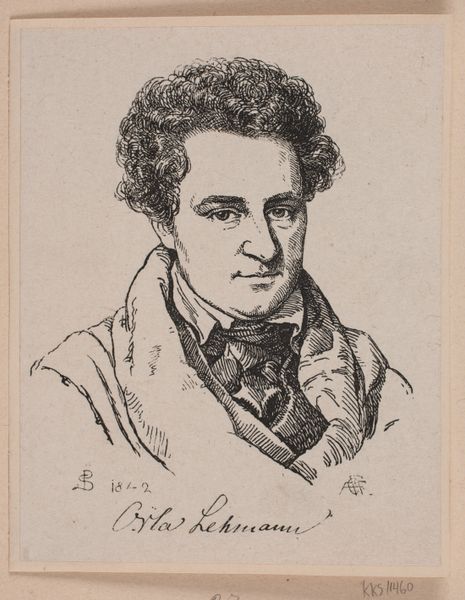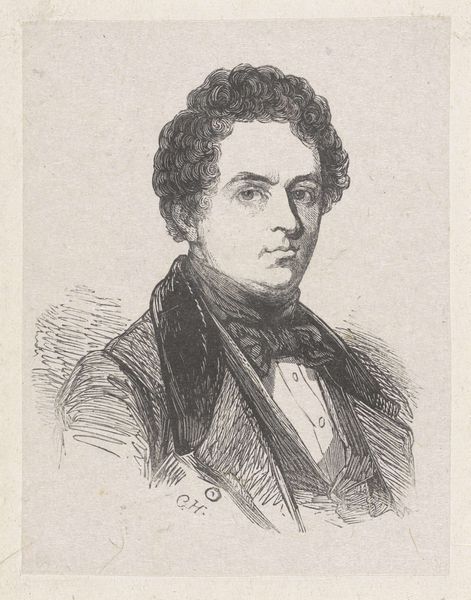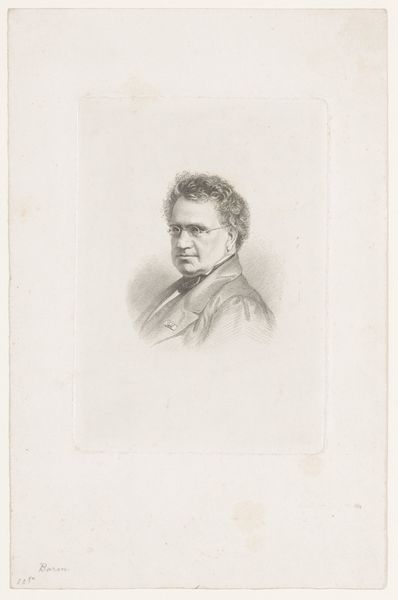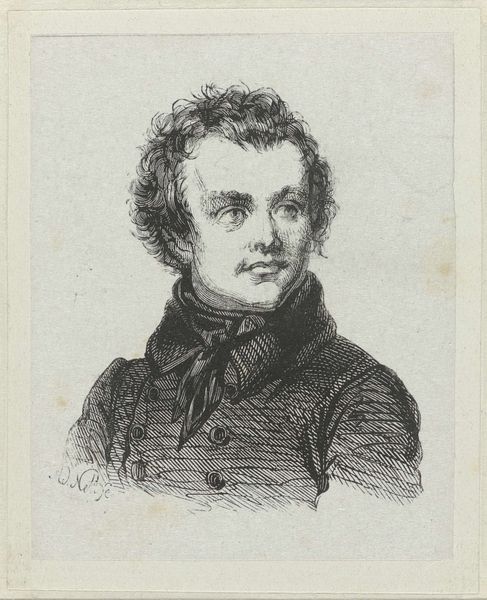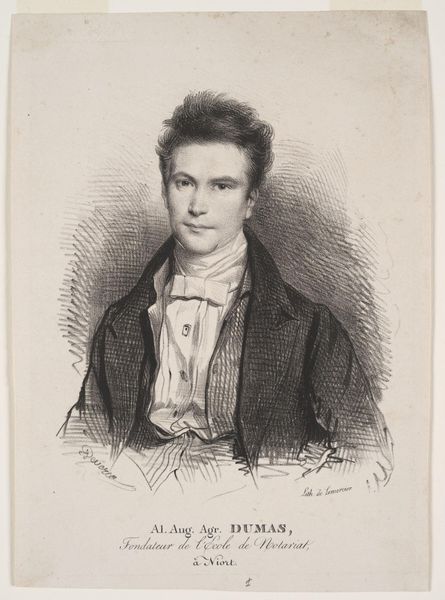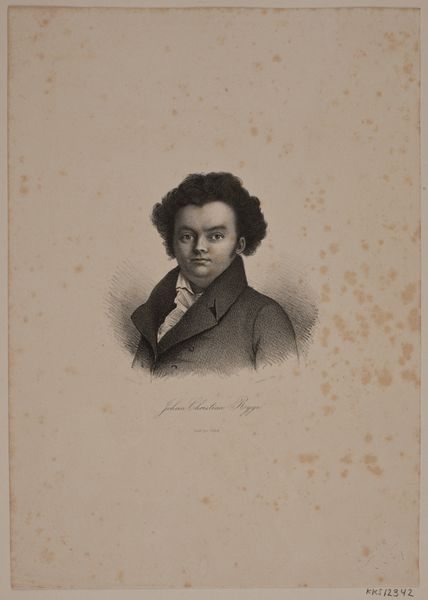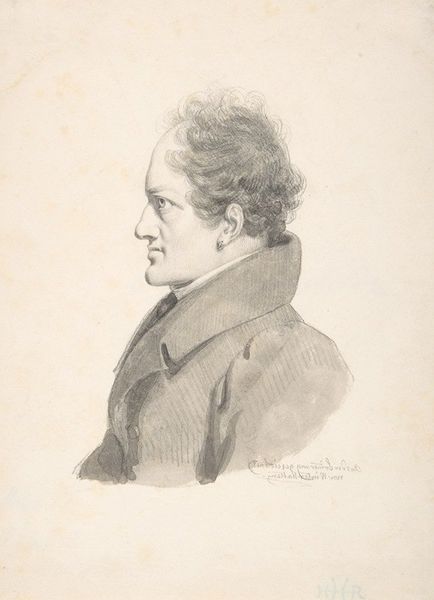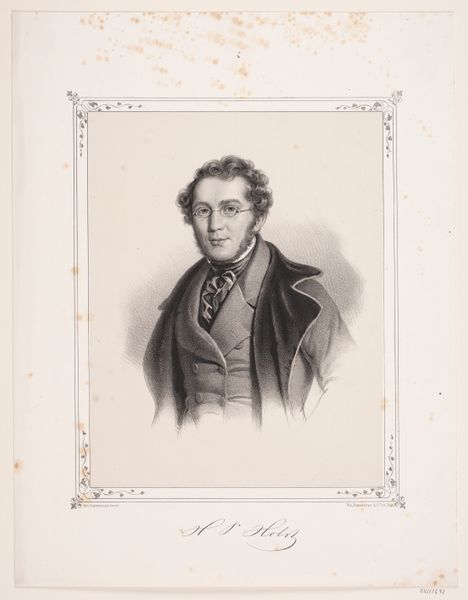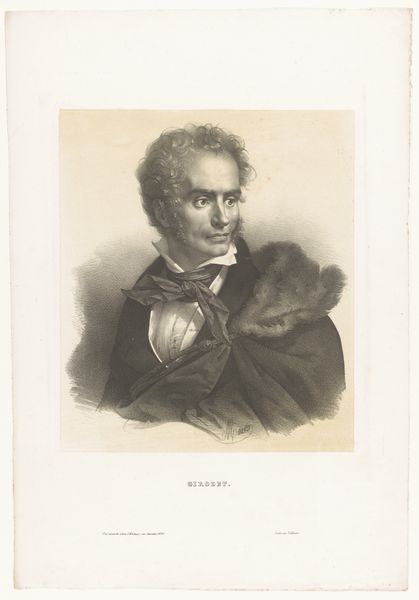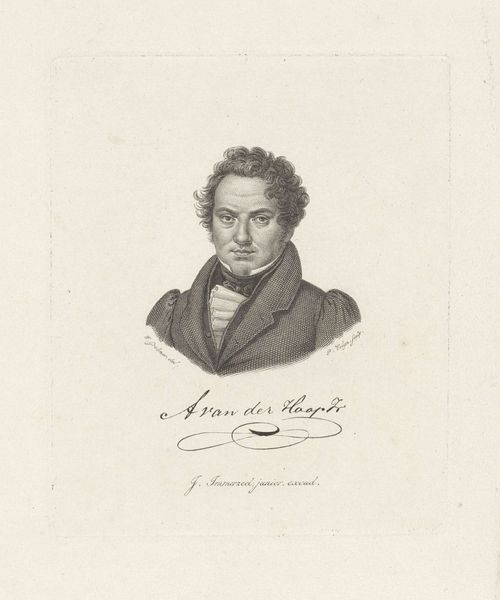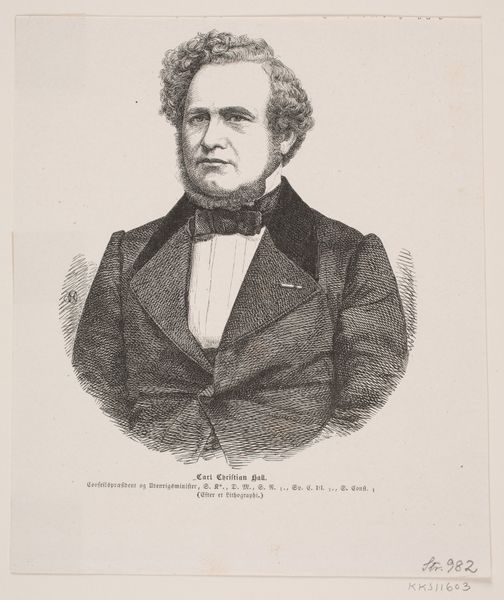
print, woodcut, engraving
#
portrait
# print
#
pencil sketch
#
caricature
#
romanticism
#
woodcut
#
line
#
portrait drawing
#
engraving
Dimensions: 97 mm (height) x 83 mm (width) (bladmaal)
Curator: Welcome. We're standing before Andreas Flinch's 1842 portrait of Orla Lehmann, rendered in woodcut and engraving. What are your initial thoughts? Editor: There’s a definite energy here. It's all in the lines, isn't it? The swirling hair, the hatching around the face – it feels very immediate and intimate, despite being a printed image. Curator: It's fascinating to consider the role of printmaking at this time. It allowed for a relatively inexpensive reproduction, and so expanded the circle of distribution to a growing audience and played a part in circulating a certain image of Lehmann. Editor: I'm drawn to how the line work defines the volumes. Notice how Flinch uses varied thicknesses to suggest light and shadow, especially on the face and around the collar. Curator: Precisely. The means of production impacts the final presentation. This isn't some grand oil painting commissioned for a noble family; it’s a printed portrait likely created for wider distribution among a public becoming increasingly engaged in political and social reform. This shifts Lehmann from remote authority to approachable individual. Editor: I see what you mean. And even within the constraints of the medium, the artist manages to convey a sense of Lehmann’s character. The eyes seem sharp and intelligent. The technique used adds dynamism and suggests a figure who isn’t still, a feeling person rather than a formal object. Curator: His posture also communicates dynamism. Flinch clearly knew how to wield his tools in service to the greater cause of promoting the image of this individual and circulating the message. Editor: It’s compelling how the constraints of engraving can become strengths. The restricted palette of black and white emphasizes form and expression, while also reducing labor cost. The whole production suggests that material restrictions are transformed to communicate meaning and message. Curator: Thank you for pointing that out. Thinking about the artistic method of producing the work and the circumstances under which this image came to exist enriches my perspective greatly. Editor: Absolutely. Analyzing the aesthetic elements along with those details has broadened the context of the artwork. Thank you!
Comments
No comments
Be the first to comment and join the conversation on the ultimate creative platform.
